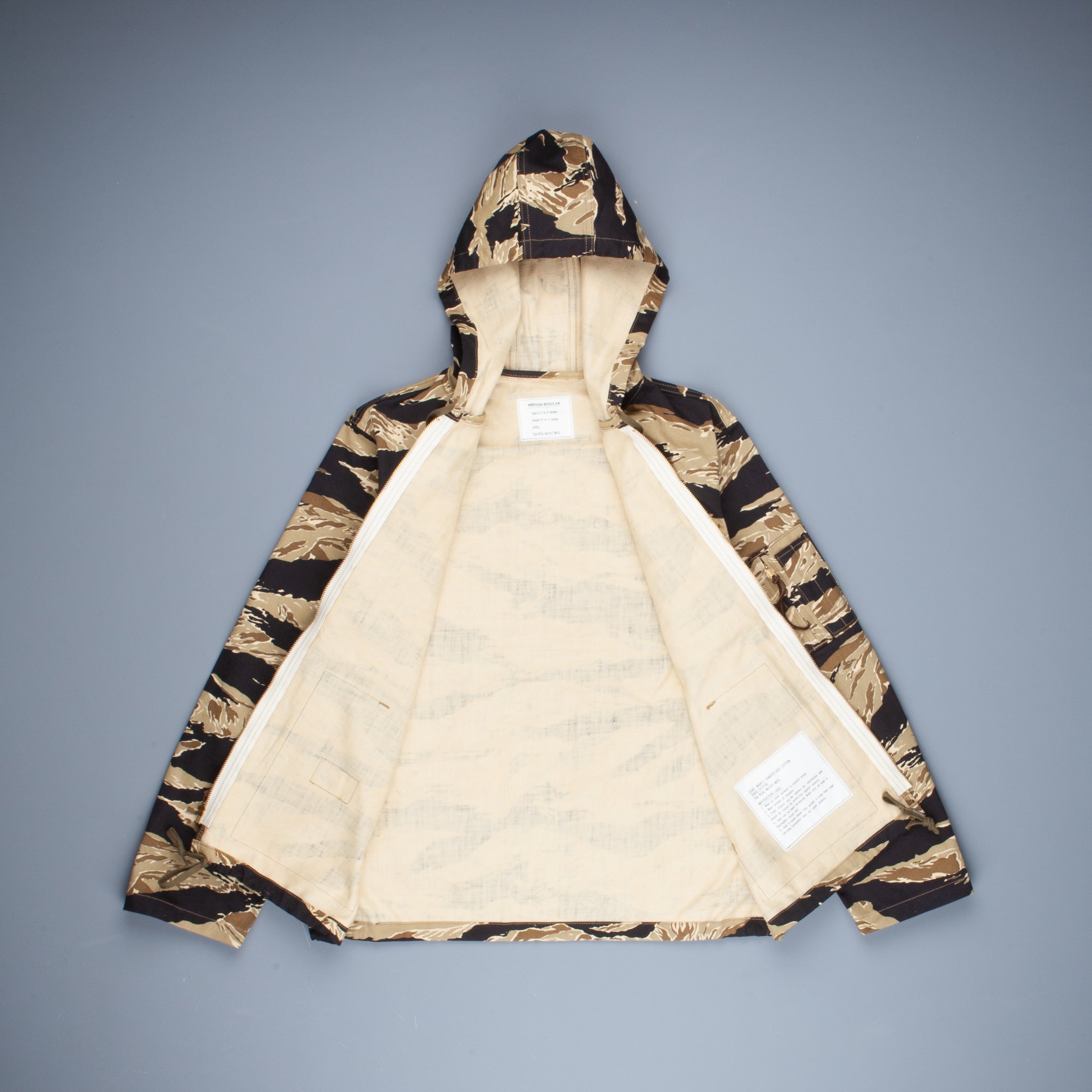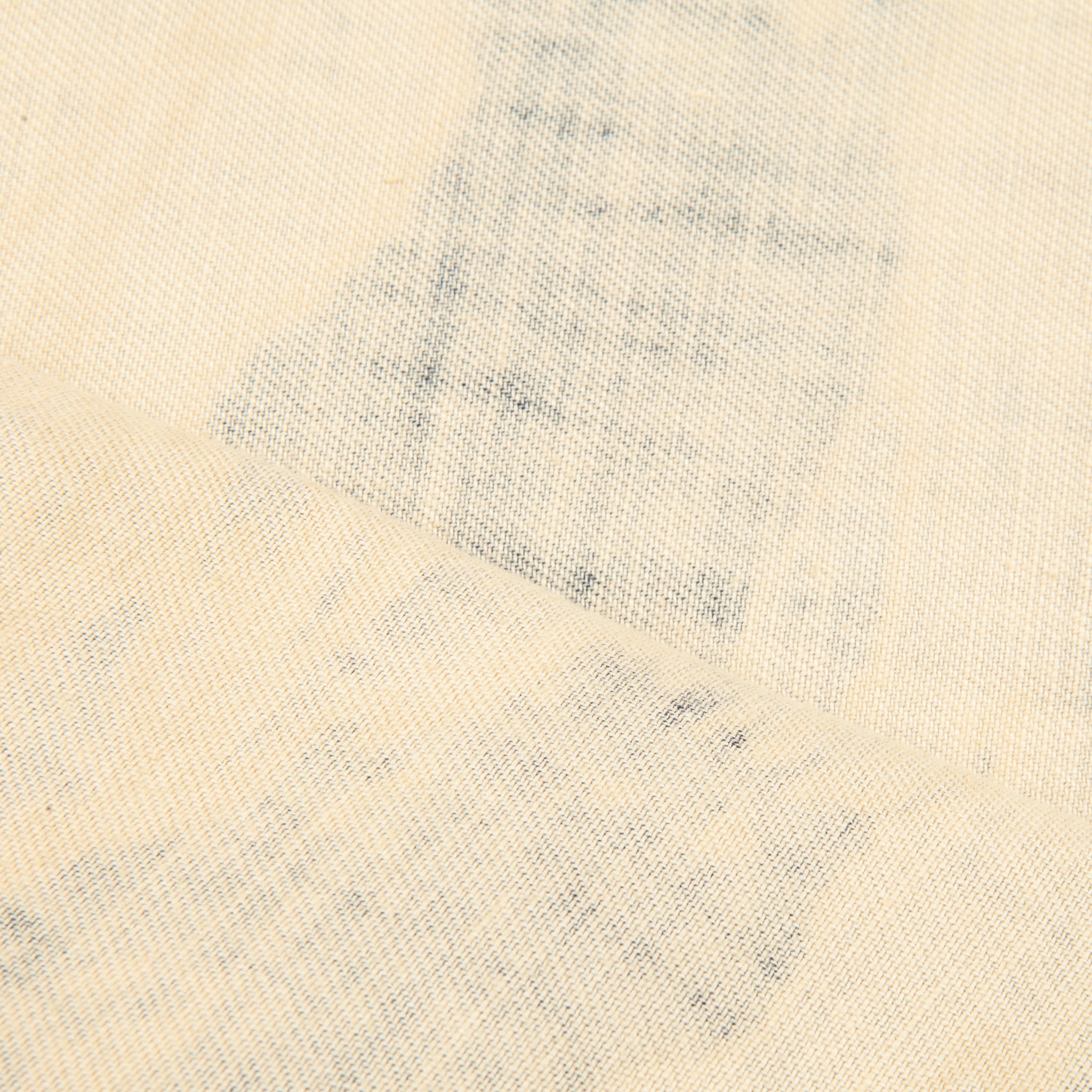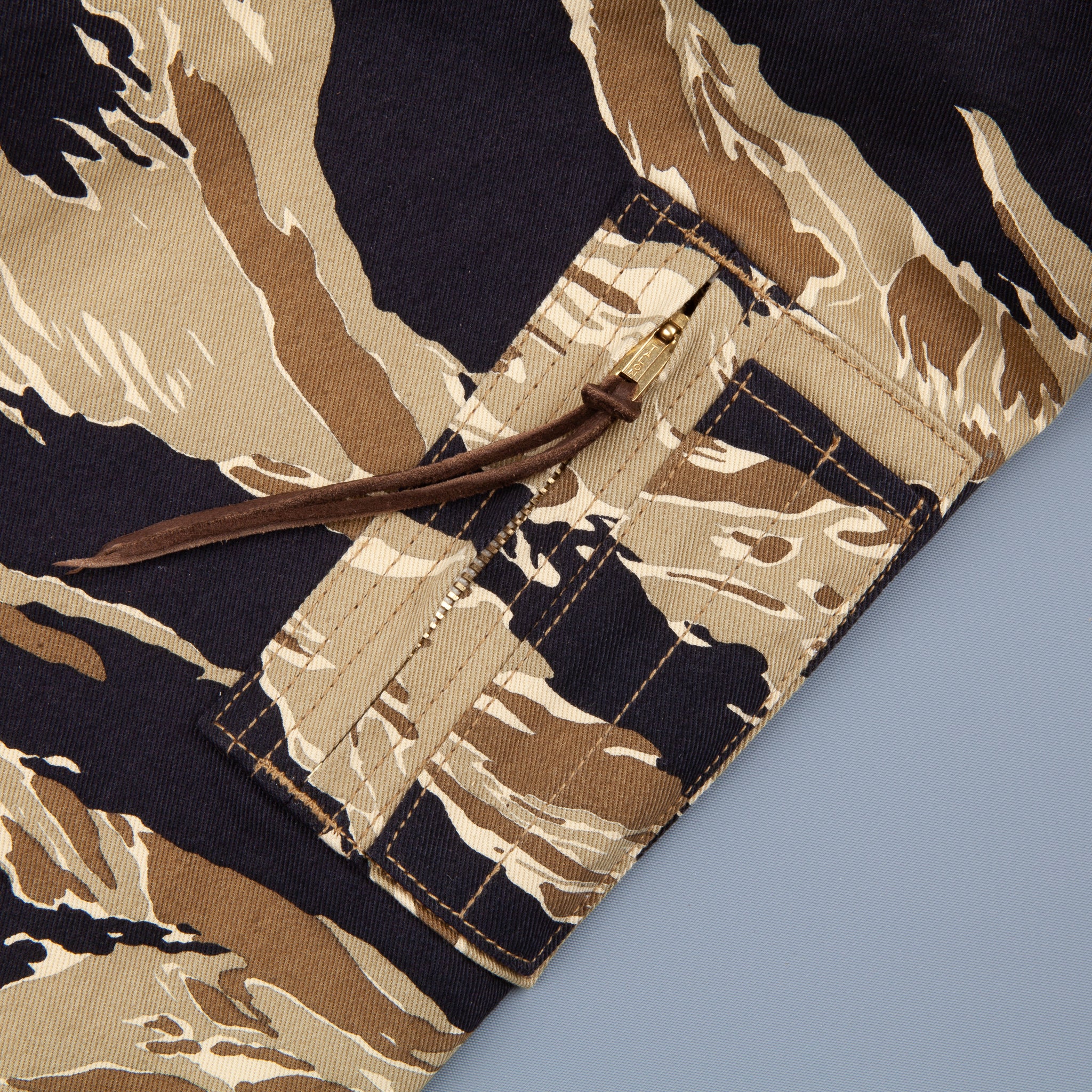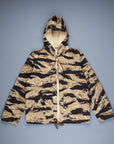
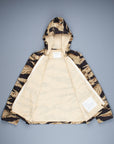
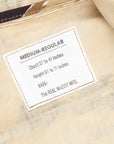
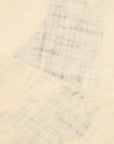
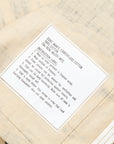
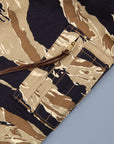
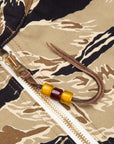
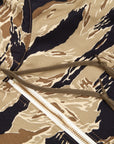
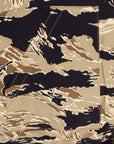
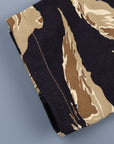
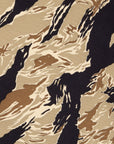
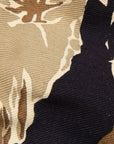
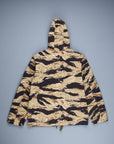
The Real McCoy's Tiger Camouflage Parka Gold tone
*EU country specific vat rates will be calculated during checkout
*outside EU import tax and vat will be calculated and collected before delivery by UPS
Tiger stripe is the name of a group of camouflage patterns developed for close-range use in dense jungle during jungle warfare by the South Vietnamese Armed Forces and adopted in 1964 by US Special Forces during the Vietnam War. During and following the Vietnam war the pattern was adopted by several other countries. It derives its name from its resemblance to a tiger's stripes. It features narrow stripes that look like brushstrokes of green and brown, and broader brushstrokes of black printed over a lighter shade of olive or khaki. The brushstrokes interlock rather than overlap, as in French Lizard pattern from which it apparently derives.
It is unclear who developed the first tiger stripe pattern. The French used a similar pattern (Lizard) in their war in Vietnam. After the French left Vietnam, the Republic of Vietnam Marine Corps continued using the pattern, a variant of which was later adopted by Vietnamese Rangers and Special Forces. When the United States began sending advisors to South Vietnam, USMAAG (United States Military Assistance Advisory Group) advisors attached to the ARVN (Army of the Republic of Vietnam) were authorized to wear their Vietnamese unit's combat uniform with US insignia. Soon, many American special operations forces in the Vietnamese theater of operations wore the pattern, despite not always being attached to ARVN units: it became the visible trademark of Green Berets, LRRPs, SEALs, and other elite forces.
Tiger stripe was never an official US-issue item. Personnel permitted to wear it at first had their camo fatigues custom-made by local tailors, ARVN uniforms being too small for most Americans; for this reason there were many variations of the basic tiger stripe pattern. From 1964 5th Special Forces Group contracted with Vietnamese and other Southeast Asian producers to make fatigues and other items such as boonie hats using tiger stripe fabric. Being manufactured by different producers, there were a wide variety of patterns and color shade variations. They were made in both Asian and US sizes. During the latter stages of the war, tiger stripe was gradually replaced in American reconnaissance units by the-then-new ERDL pattern (Engineer Research & Development Laboratories, also known as leaf pattern), a predecessor of the woodland BDU pattern. The Special Forces-advised Civilian Irregular Defense Group (CIDG) used tiger stripes from 1964 until disbanded in 1971. Special Forces personnel wore tiger stripes when conducting operations with the CIDG.
Besides American and ARVN forces, Australian and New Zealand military personnel used tiger stripe uniforms while on advisory duty with the ARVN units. Personnel from the Australian and the New Zealand Special Air Service units were the principal wearers of tiger stripe uniforms (and ERDL uniforms) in theater, while regular Australian and New Zealand troops wore the standard-issue olive drab green uniforms. Outside of Vietnam, Thailand and Philippines have been the most prolific manufacturers of tiger stripe designs since the Vietnam War. The pattern became popular throughout the Middle East and South America as well.
During the Vietnam war, this specific variation of tiger stripe camouflage was produced in Japan before being sewn together in Vietnam. Local tailors in Vietnam made about every garment for both Vietnamese and US forces out of these bunches of tiger stripe cloth, both for use in combat and later as leisure wear (think of vests, souvenir jackets, baseball caps). In an effort to recreate this particular style of tiger stripe pattern the people at The Real McCoy’s had to hand print this pattern as a result of the fact that the size of the print was just too big to do it with machine printing. The pattern is printed on a 100% cotton base, custom made and designed to reproduce the fabric used in that era and on the other hand keeping a close eye to the high standards of The Real McCoy’s.
- Brass 1950’s Talon zipper with a handmade glass bead detail on the zipper pull.
- True to size.
- Wash cold, hang dry.
- 100% cotton
- Hand printed fabric
- Two open hand pockets
- Made in Japan
Here you can find all info about returning an item FAQ
Return rules for clearance items outside EU -
Clearance items -30% -50% are not eligable for a return when purchased outside EU
When purchased in EU the rules are like the non clearance items.


